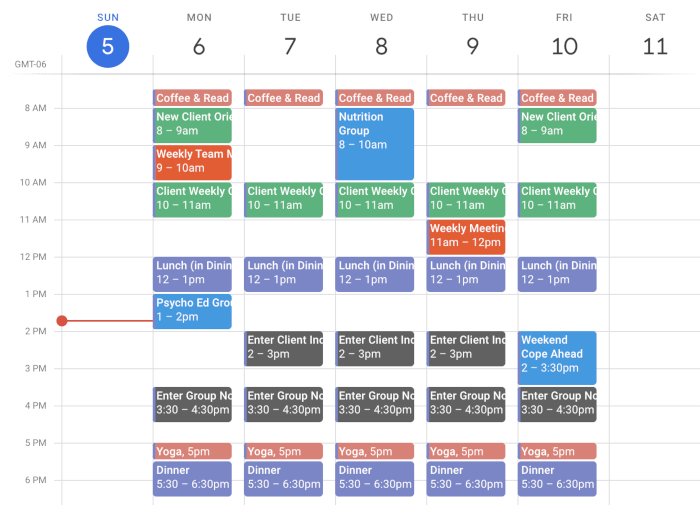The Parkinson’s Law Hack: How Artificial Deadlines Can Double Your Productivity Speed
Have you ever experienced the peculiar phenomenon where you can procrastinate on a project for weeks, only to complete it in a few intense hours when the deadline finally approaches? This isn’t a character flaw—it’s a predictable psychological response. Our brains are evolutionarily wired to respond to temporal constraints in specific ways, and mastering deadline psychology can revolutionize your approach to every task.
Most individuals perceive deadlines as external impositions from supervisors, clients, or circumstances beyond their control. However, what if you could deliberately harness that same urgency and laser-sharp focus whenever you desired? The breakthrough lies in constructing artificial deadlines that activate identical psychological mechanisms as genuine ones. When implemented strategically, this cognitive hack can exponentially accelerate your productivity output.
The core issue isn’t laziness or lack of focus—it’s operating without the psychological frameworks that naturally elevate your brain into peak performance mode. By comprehending how deadline pressure influences your cognitive processes, you can systematically engineer environments that consistently elicit your highest-quality work in unprecedented timeframes.
Understanding Parkinson’s Law and Its Grip on Your Productivity
Parkinson’s Law articulates that “work expands to fill the time available for its completion.” British historian Cyril Northcote Parkinson first documented this principle in 1955, yet its relevance has only intensified in our modern work environment. Allocate a week for report writing, and you’ll somehow require the entire week. Compress that timeline to two days, and you’ll discover methods to complete it within that constraint.
This phenomenon transcends task complexity—it’s fundamentally about how our brains distribute cognitive resources based on perceived temporal boundaries. With unlimited time, your mind operates in a relaxed, diffuse state. You interrupt writing sessions to check emails, pursue tangential research paths, and continuously question every decision.
The underlying mechanism driving this behavior is loss aversion psychology. As deadlines approach, the potential loss of reputation, financial resources, or opportunities becomes more psychologically salient than the comfort of leisurely progress. Your brain transitions from “exploration mode” to “execution mode,” systematically eliminating distractions and concentrating on essential activities.
Observe how students consistently produce all-nighters before examinations, synthesizing months of learning into single evening sessions. Consider how entrepreneurs can completely pivot business models within days when funding becomes critical. These aren’t coincidences—they’re predictable responses to time pressure that you can intentionally activate.
The crucial insight is that time constraints don’t merely influence when you work; they fundamentally transform how you work. Under pressure, you make accelerated decisions, abandon perfectionism, and focus on the 20% of actions that generate 80% of results. This isn’t cutting corners—it’s achieving clarity.
The Neuroscience Behind Deadline Pressure and Peak Performance
Deadline psychology operates through multiple interconnected neurological mechanisms that most people never consciously recognize. Understanding these invisible forces is essential for creating artificial deadlines that genuinely influence behavior, rather than arbitrary dates your subconscious will dismiss.
Primarily, deadlines activate your brain’s threat detection system. When time becomes scarce, your amygdala interprets this as a mild threat, triggering a focused attention state analogous to fight-or-flight response. This isn’t harmful stress—it’s the same physiological arousal that athletes experience before competition. Your brain releases norepinephrine, enhancing focus and optimizing working memory capacity.
Secondly, deadlines establish what psychologists term “implementation intentions.” Instead of vague objectives like “finish the presentation,” you develop specific if-then protocols: “If it’s 2 PM, then I must have the first draft completed.” This specificity eliminates decision fatigue and reduces mental energy waste on continuous planning.
The scarcity principle functions as a critical component. When time feels abundant, your brain treats it carelessly. When time becomes scarce, every minute acquires heightened value. This perceived scarcity compels ruthless prioritization, cutting through non-essential activities that typically consume your day.
Most significantly, deadlines transform your relationship with perfectionism. Without time pressure, you can endlessly refine and optimize. With an approaching deadline, “good enough” becomes entirely acceptable. This isn’t lowering standards—it’s recognizing that 90% quality delivered punctually usually surpasses 100% quality delivered late.
The psychological sweet spot occurs when deadlines feel challenging yet achievable. Too easy, and you won’t experience urgency. Too aggressive, and you’ll trigger genuine stress that impairs performance. The objective is creating what researchers call “eustress”—positive stress that enhances rather than inhibits your capabilities.
Engineering Effective Artificial Deadlines That Your Brain Actually Respects
Creating fake deadlines that your brain takes seriously requires more sophistication than simply writing random dates in your calendar. Your subconscious mind is remarkably adept at detecting artificial constraints, so you must engineer genuine psychological pressure.
Begin by making your deadlines public and consequential. Communicate to colleagues, friends, or clients when you’ll deliver something. Even better, schedule the subsequent step immediately after your fake deadline. If you’re writing a report, schedule the meeting to present it. If you’re launching a product, announce the release date publicly. The potential social cost of missing your deadline makes it psychologically authentic.
Create artificial scarcity by booking your time after the deadline. Schedule something enjoyable—dinner with friends, a weekend trip, or even a Netflix binge. Your brain will work harder to “earn” that reward by completing the task first. This leverages the same psychology that makes Friday afternoons surprisingly productive.
Utilize the “earlier deadline” technique with real external deadlines. If something is due Friday, tell yourself it’s due Wednesday. This creates a buffer while still triggering urgency. The key is committing to the earlier date as seriously as you would the real one.
Break large projects into smaller chunks with individual deadlines. Instead of “finish the website in two weeks,” create daily deadlines: “homepage copy by Tuesday, design mockups by Wednesday, development by Friday.” Each mini-deadline creates a fresh burst of focus and prevents the project from stagnating.
Technology can help make fake deadlines feel more real. Use Google Calendar notifications, project management tools like Asana or Trello, or even simple timers to create external pressure. The goal is making the deadline feel like it’s coming from outside your own mind, even when you set it yourself.
The Scientific Evidence: Why Compressed Timeframes Enhance Cognitive Performance
Research in cognitive psychology reveals why compressed timeframes consistently produce superior results compared to generous ones. The phenomenon extends beyond simple time management—it’s about how time constraints fundamentally alter your cognitive processes.
Studies demonstrate that when people work under moderate time pressure, their brains exhibit increased activity in the prefrontal cortex while reducing activity in the default mode network. In practical terms, this means less mind-wandering and more sustained attention. The ticking clock acts as an external focusing mechanism that your brain cannot ignore.
The Yerkes-Dodson law explains the optimal level of pressure. Performance increases with physiological arousal (stress) up to a point, then decreases as stress becomes overwhelming. Deadlines create the perfect amount of arousal for peak performance—enough to eliminate distractions, not enough to cause paralysis.
Shorter timeframes also trigger what researchers call “temporal landmarks”—psychological markers that help you organize and prioritize actions. When you have a month to complete a project, individual days blur together. When you have a week, each day becomes significant. When you have a day, each hour matters.
Neuroscientist Dr. Adam Gazzaley’s research on cognitive control shows that time pressure reduces “interference” from irrelevant information. Under deadline pressure, your brain becomes more selective about what deserves attention. You stop researching perfect solutions and start implementing good ones.
The “planning fallacy” works in reverse under time pressure. People typically underestimate how long tasks will take when they have plenty of time, leading to overengineering and scope creep. Time constraints force more realistic planning and prevent feature creep that derails projects.
Interestingly, deadline pressure doesn’t just make you work faster—it often makes you work better. The urgency forces you to focus on core objectives rather than getting lost in peripheral details. Many breakthrough innovations happened under extreme time pressure because constraints sparked creative solutions.
Critical Mistakes When Setting Artificial Deadlines (And How to Avoid Them)
Even people who understand deadline psychology often sabotage themselves with poorly designed artificial deadlines. Recognizing these common mistakes can save you from the frustration of deadlines that don’t work.
The biggest mistake is setting deadlines without consequences. If missing your fake deadline has no real impact, your brain will quickly learn to ignore it. Every artificial deadline needs teeth—social accountability, financial stakes, or opportunity costs that make missing it genuinely painful.
Another common error is making deadlines too aggressive. While time pressure boosts performance, impossible deadlines trigger overwhelm rather than focus. If you consistently miss your artificial deadlines, they’ll lose psychological power. Start with deadlines that feel slightly uncomfortable but achievable, then gradually compress timeframes as you build confidence.
Many people fail to account for the “preparation phase” when setting deadlines. Just like athletes need warm-up time, your brain needs a brief period to shift into high-performance mode. Setting a deadline for 9 AM on Monday when you’ve been relaxing all weekend rarely works. Build in transition time to mentally prepare for intensive work.
Treating all tasks the same is another crucial mistake. Creative work responds differently to time pressure than administrative tasks. Writing benefits from tight deadlines that prevent overthinking, while complex problem-solving might need slightly more breathing room to allow for insight moments.
The “deadline clustering” mistake involves setting multiple deadlines too close together. If everything is urgent, nothing feels urgent. Space your artificial deadlines to maintain the psychological impact of each one. Your brain needs time to reset between high-pressure sprints.
Finally, many people abandon the practice after one or two failed attempts. Like any skill, creating effective artificial deadlines requires practice and adjustment. Track what works for your personality and work style, then refine your approach rather than giving up entirely.
Real-World Case Studies: How Deadline Psychology Transformed These Workflows
Understanding deadline psychology in theory is one thing—seeing it work in practice is another. These real-world examples demonstrate how individuals and organizations have dramatically improved their productivity by strategically manipulating time constraints.
Sarah, a freelance graphic designer, struggled with client projects that consistently ran over budget because she kept refining designs. She started telling clients that first drafts would be ready 48 hours earlier than her actual internal deadline. This artificial buffer created urgency that prevented endless tweaking, while still allowing time for genuine improvements. Her project completion time dropped by 40%, and client satisfaction increased because she delivered earlier than expected.
A software development team at a mid-sized company implemented “sprint Fridays”—artificial deadlines requiring all features to be demo-ready by Friday afternoon, even though the real deadline was the following Monday. The psychological pressure of presenting to colleagues forced developers to focus on core functionality rather than perfect code. Bug rates didn’t increase, but feature delivery accelerated significantly.
Marketing manager Tom used calendar blocking to create artificial scarcity. After struggling with a quarterly campaign that dragged on for weeks, he blocked out his entire calendar for the three days following his self-imposed deadline. Knowing he couldn’t work on the campaign after Wednesday made Wednesday feel like a real deadline. The campaign launched on schedule for the first time in months.
A consulting firm found that clients always used their full contract hours, regardless of project scope. They began setting internal deadlines 20% ahead of client deadlines, treating the extra time as “buffer” rather than “available time.” Projects consistently finished early, client satisfaction improved, and the firm could take on more work without hiring additional staff.
Writing coach Emma helped authors overcome perfectionism by implementing “minimum viable chapter” deadlines. Instead of waiting for perfect chapters, writers committed to completing “good enough” versions by specific dates. The psychological shift from perfection to progress helped authors finish manuscripts months ahead of their original timelines, with quality that improved during later revision phases.
Advanced Strategies for Mastering Time Constraints in Different Scenarios
Once you understand basic deadline psychology, you can develop sophisticated strategies tailored to specific situations and work types. These advanced techniques help you fine-tune time pressure for maximum effectiveness across different contexts.
For creative work, use “constraint-based creativity” deadlines. Instead of “finish the design by Friday,” try “complete three different concepts by Wednesday, then choose one to refine by Friday.” This approach prevents the paralysis of infinite options while maintaining creative exploration within defined boundaries.
When managing team projects, implement “cascade deadlines” where each team member’s deadline creates real pressure for the next person. If Designer A finishes mockups by Tuesday, Developer B can start coding Wednesday, and Tester C can begin Thursday. Each deadline becomes genuinely consequential because real people are waiting.
For analytical work, create “decision deadlines” separate from completion deadlines. Research and analysis can expand infinitely, but decisions don’t need perfect information. Set a deadline for gathering information, then a separate deadline for making decisions based on available data. This prevents analysis paralysis while maintaining thoroughness.
Use “accountability partners” to make deadlines feel external rather than self-imposed. Exchange deadlines with colleagues, friends, or mentors. The psychological pressure of disappointing someone else is often stronger than disappointing yourself. Regular check-ins create multiple mini-deadlines that maintain momentum.
Implement “progressive pressure” by gradually shortening deadlines for recurring tasks. If monthly reports typically take a week, try completing next month’s in six days, then five days, then four. This gradual compression reveals how much time you actually need versus how much you typically use.
For complex projects, use “reverse deadline engineering.” Start with the final deadline and work backward, creating intermediate deadlines that account for dependencies and potential delays. This creates a series of psychologically real deadlines rather than one distant target that feels abstract.
The “time-boxing” technique works well for open-ended tasks. Instead of “research the competition,” try “spend exactly 90 minutes researching the competition, then write a summary.” The fixed time constraint forces you to focus on the most important information rather than pursuing every possible angle. Tools like Tomato Timer can help implement this technique effectively.
Conclusion: Mastering Your Brain’s Natural Productivity Mechanisms
The power of deadline psychology lies not in working harder, but in working with your brain’s natural tendencies rather than against them. By understanding how time constraints trigger focus, eliminate perfectionism, and force prioritization, you can consistently access the same high-performance state that emerges naturally under pressure.
The key is remembering that effective artificial deadlines need psychological weight. They must feel consequential, realistic, and externally enforced. Start with small experiments—a two-hour deadline for a task that usually takes half a day, or a Friday completion target for something you’d normally finish the following Monday.
As you develop skill with deadline psychology, you’ll find that the quality of your work improves alongside the speed. Time pressure doesn’t compromise excellence—it forces you to focus on what truly matters for excellent results. The goal isn’t to live in constant urgency, but to access that focused state whenever you need it most.



